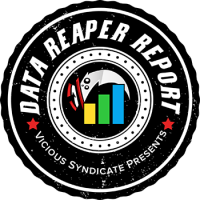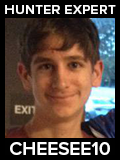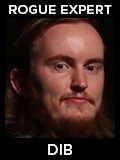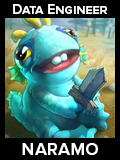
Welcome to the 151st edition of the Data Reaper Report!
Our Data Reaper Project, including the Data Reaper Live has 3,100 active contributors and we thank them wholeheartedly. Contributing to the Data Reaper project through Track-o-Bot or Hearthstone Deck Tracker (recommended) allows us to perform our analyses and to issue the weekly reports. Without the community’s contribution, there would be no project. Contributing data is very easy and takes a few simple steps, after which no other action is required. If you enjoy our content and would like to make sure it remains consistent and free – Sign Up!
Quick Links
Class/Archetype Distribution | Class Frequency | Matchup Winrates | vS Power Rankings | vS Meta Score | Class Analysis & Decklists | Meta Breaker of the Week | How to Contribute | Credits
Number of Games
| Overall | 40,000 |
| Legend | 6,000 |
| Ranks 1-4 | 14,000 |
| Ranks 5-9 | 15,000 |
| Ranks 10-14 | 3,000 |
Class/Archetype Distribution
[TABS_PRO id=31790]
Class Frequency
[TABS_PRO id=31791]
Class Frequency Discussion
It’s been a little over a week since balance changes arrived, and it kinda feels like we didn’t really have balance changes. That’s because one class dominates representation in dramatic fashion: Rogue is just everywhere. The higher you climb ladder, the worse it gets, as Rogue nears 40% of the field at legend. Highlander Rogue was the first deck to blow up with the launch of the patch, but Galakrond Rogue quickly followed and is currently in the process of taking over the class with a different build from its pre-patch days, one that is focused on burn. It’s already the most popular deck at legend and we expect that to trickle down to all levels of play in the next week or so. Malygos Rogue can also be seen, while Deathrattle Rogue is fading away as a result of the nerf to Necrium Apothecary.
Hunter was initially perceived to be an answer to Rogue, with both Face Hunter and Highlander Hunter seeing a good amount of play. Both decks are still in the process of refining their builds for the new meta, while Quest Hunter continues to be underrepresented.
Warrior has taken a big hit in its play rate, which isn’t surprising considering that both of its primary archetypes have suffered changes to their most powerful cards. However, Galakrond Warrior remains very common throughout ladder, while Pirate Warrior has been reduced to a more niche presence.
Warlock has seen a lot of changes. The nerf to Fiendish Rites took the wind out of Zoo Warlock’s sails, and it’s been abandoned by many players as a result, especially at higher levels of play. Handlock wasn’t affected by the nerf, so it remains moderately popular throughout ladder. Control Warlock was a deck we labeled as a Meta Breaker before the patch, and while the nerf slowed down its growth to some degree, it has still significantly risen in play to become the most popular Warlock deck at legend.
The patch has sparked new interest in Druid, with Token Druid serving as the main attraction, rising in popularity by several folds. Quest Druid is the second most noticeable archetype, with the Breath of Dreams/Ysera dragon build making up the large majority of its play rate. We cannot find the older, Savior of Uldum builds on ladder.
Highlander Mage is also attracting slightly more interest, with players looking to find other late-game strategies that could possibly be successful with many Galakrond decks being watered down.
Shaman has fallen off the face of the earth. Galakrond Shaman has collapsed into a jank, unrefined mess in response to the nerfs it was hit with. We can already warn you that data related to this deck could be misleading and it will be difficult to evaluate how good or bad Galakrond Shaman really is. Aggro Shaman is seeing little play and is also relatively unexplored.
Priest is showing similar play patterns to its pre-patch days, which isn’t promising. Resurrect Priest is fairly common throughout ladder, but vanishes at legend. Galakrond Priest is noticeable at lower ranks but remains irrelevant when it comes to actually winning Hearthstone games. Combo Priest is seeing little play at all rank brackets.
Paladin still looks mostly dead. There’s a small uptick in Mech Paladin, but the deck is still quite rare to find on ladder. Other than that, there are just the few masochists playing Holy-Wrath Paladin in a Rogue meta, followed by the mish-mash of garbage the class is famous for.
[TABS_PRO id=31792]

[TABS_PRO id=31793]
vS Meta Score
[TABS_PRO id=31794]
vS Power Rankings Discussion
Galakrond Rogue is the best deck in the game and looks near-impossible to counter. Who could have predicted that by nerfing every other Galakrond deck, Rogue would take over the format with its untouched Galakrond synergy? (HMM…) Nerfing Apothecary only shifted the archetype’s build path, but once it found its next best approach, Galakrond Rogue absolutely dominates the late game against the weakened field.
You can almost forget that Highlander Rogue is a very good deck. It’s just almost always worse than Galakrond Rogue, with the exception of a couple of matchups, which is why the latter is in the process of taking over. It’s important to note that Galakrond Rogue exhibits a small edge in Rogue mirrors. In a Rogue meta, being the best deck in the mirror counts for a lot.
Malgyos Rogue feels out of place. It’s much more susceptible to being rushed down by aggressive decks (especially Hunter). Its OTK potential might be relevant in a couple of popular matchups, but against the rest of the field, its passivity is a major liability. We don’t expect Malygos Rogue to survive in the current meta when it lives under the dark shadow of far superior decks within its class.
Does Face Hunter counter Rogue? The answer seems to be a resounding “no”. Face Hunter vs. Galakrond Rogue is an even matchup at higher levels of play, and Rogue players have continued to improve it over the last week. Highlander Rogue performs slightly worse against Face Hunter because its racing potential is weaker, while Malygos Rogue folds without the ability to counter-pressure the opponent early. Face Hunter is a decent ladder deck, but it’s no meta breaking counter to Rogue, which is why it sits at Tier 2.
Highlander Hunter also has close matchups against the two best Rogue decks, but it’s a more well-rounded deck that isn’t hard countered by sustain, which is why its performance on ladder is overall superior to Face Hunter. There is a concern that it’s currently enjoying beating down on “bad decks” in the early patch meta, while its performance against the top meta decks isn’t particularly special. Once the meta settles down, its win rate could decline as a result. However, considering its current Tier 1 position throughout most of ladder, it will likely remain one of the stronger decks in the game. Compared to its standing before the balance changes, that’s a big upgrade.
Face Hunter is not just 2nd best within its class, it could be 3rd best if players give Quest Hunter a chance. This archetype might be the best performing Hunter deck against the Rogue class due to its intimidating post-quest clock and strong removal through rush minions. We would be very interested to see how it performs on a larger sample because based on the little we’ve seen from the deck so far, its matchup spread against the top meta decks is extremely promising.
Can anything stop Rogue? The closest thing to stopping Rogue is playing Control Warlock. The deck carries all the tools necessary to give both premier Rogue decks a difficult time. In fact, Control Warlock seems to have no real counters of its own, which is why it’s sitting at Tier 1. The Fiendish Rites nerf ain’t stopping this bad boy.
Handlock has now climbed to a positive win rate on the back of its lackey/burn build. It still has room for improvements as players have yet to settle down on its last few slots. Handlock has close matchups with Rogue and good matchups with Warrior, so it’s in a decent spot.
Players might have been too quick to write off Zoo Warlock, as the deck still displays a strong win rate. One issue is that its build is already optimal, while other decks will likely get stronger. This means that Zoo’s win rate is expected to decline over the next week, but will it decline to the degree that it won’t be competitive? Probably not. Zoo should still be okay.
Galakrond Warrior doesn’t look like the dominant deck it used to be, but there are some underlying factors that drag it down. As a nerfed deck, it’s taking a bit of time to figure out the necessary adjustments in response to the balance changes. It doesn’t help to have a weak card (Battle Rage) become so ubiquitous in the archetype (we’re entering Spirit of the Shark levels of fixation here). Galakrond Warrior’s future success is tied to its matchup with Galakrond Rogue. If it can increase its efficiency, and gain a few percentage points in this matchup, it will look stronger.
Pirate Warrior looks stronger at the moment, but it makes sense. Despite the nerf to Ancharr, the deck didn’t need to change its build or replace the card at all. Aggressive decks also tend to start strong in an early patch meta, so don’t write off Pirate Warrior. The deck still gets W’s.
Token Druid has gotten stronger as a result of the balance changes, and its performance is particularly good at lower ranks. It gets knocked down to Tier 2 once we hit rank 4 because its performance against most of the top meta classes (Rogue, Warrior, and Warlock) is underwhelming. This suggests that Token Druid is unlikely to be a big player in the current meta. But, this is still an improvement to its mediocre showing pre-patch. Unfortunately, Quest Druid is not showing the same kind of improvement. It still sits in the dumpster.
Resurrect Priest still looks quite mediocre, which isn’t surprising considering its poor matchups into Rogue. As long as Rogue is the top meta class, it’s hard to see this deck doing any better. Meanwhile, Combo Priest is showing more promise despite its low play rate, and we estimate it to be in Tier 2. Merits more play than it’s getting.
Highlander Mage is another disappointing performer. It struggles against Hunter as well as the Burn Galakrond Rogue deck, which is not a good trait if you’re interested in consistent success. There are ways to improve these matchups, but not to the extent that would make Highlander Mage stronger than average.
The state of Shaman looks grim. Galakrond Shaman looks terrible, but as we’ve said earlier, it’s hard to draw conclusions about its power level when we look at what’s actually being played by this archetype (a lot of outdated builds). Nevertheless, this is not a good sign.
A Paladin deck actually looks playable. Indeed, we estimate that Mech Paladin has a pretty good and positive win rate. It’s a previously refined aggressive deck, so it might be benefiting from the jank meta effect, but for now, the Paladin class is not completely and utterly dead. There’s a pulse and some labored breathing.
Class Analysis & Decklists
Druid | Hunter | Mage | Paladin | Priest | Rogue | Shaman | Warlock | Warrior
Rogue was the biggest winner of the balance changes, which propelled it to the dominant #1 spot. It is both the most popular and most successful class in the format. While Blizzard did nerf Necrium Apothecary, they did not touch Rogue’s Galakrond synergy. With other classes seeing their Galakrond synergy cards directly nerfed, the road was paved for Rogue to take over. There are three primary Rogue archetypes being played, and all of them utilize Galakrond.
The standard Galakrond Rogue is likely the best deck in the game, and it has reinvented itself after the nerf to Apothecary by shedding the deathrattle package for a burn package. Leeroy, Eviscerates, Lifedrinkers, and SI:7 Agents become devastating follow-ups to a fully upgraded Galakrond, helping you finish off your opponents quickly. Part of the reason why Galakrond Rogue is the superior class archetype is its performance in mirrors, where it is favored against both Highlander and Malygos Rogue. It is fast, consistent, and its lethality makes it very difficult to counter.
There is some flexibility to the featured build, which BoarControl took to #1 legend. The legendary mechs (SN1P/Zilliax) can be swapped in alongside Faceless Corruptors to replace SI:7 Agents and Lifedrinkers, increasing the build’s focus on board control. Gyong took this variant to #1 legend. Another option is to slot Questing Adventurers and Umbral Skulkers into the four flex spots, giving you bigger threat potential. Questing Adventurer performs well in the current meta, but Umbral Skulker is the main issue of this variant: it’s a little awkward to use due to hand size issues.
Highlander Rogue is also one of the best decks in the game thanks to the class’ deep card pool and its strong abuse of Zephrys (Shadowstep) and Dragonqueen Alexstrasza (Galakrond, Togwaggle). The archetype had no issue replacing the Deathrattle package with the next best cards available to the class, such as SN1P-SN4P and Siamat. The featured build is one card different from Tyler’s #1 legend list, swapping SI:7 Agent for Bone Wraith. The list is pretty much perfect and we wouldn’t change anything about it (resist the temptation to run narrow tech cards, folks). One surprising takeaway from our analysis of the archetype is the performance of Bad Luck Albatross. It is a very good 3-drop for the deck, and it’s not just good in the Highlander mirror.
Malygos Rogue, to be blunt, is a trap deck that’s very underwhelming compared to the other Rogue archetypes and we don’t expect it to last. Its passivity leaves it extremely vulnerable to aggressive decks such as Face Hunter. The best build runs Jepetto, since he increases your chances of discounting Malygos while also helping you find cheap invokes to upgrade your Galakrond efficiently. Every minion in your deck is pretty strong in the form of a 1 mana 1/1. We would stay away from Gadgetzan Auctioneer, despite the temptation of running it alongside Umbral Skulker, and we’re not impressed with Candle Breath Dragon builds either.
Hunter is another winner of the balance changes. Face Hunter is enjoying the decline in Warriors, while Highlander Hunter has grown much stronger in an overall weakening Galakrond field. Hunter is capable of having success in a Rogue meta, but it isn’t the hard counter to Rogue that some may perceive it to be. It farms the sub-optimal Malygos Rogue, but none of its archetypes exhibit a big edge against Galakrond or Highlander Rogue.
When it comes to Face Hunter, a new build has emerged in the aftermath of the balance changes that currently performs better than the older, Arcane Shot/Rapid Fire build. It is a token variant that runs Snake Trap to increase the secret package to 4, while adding token synergy cards in Knife Juggler and Timber Wolf. Snake Trap is a very annoying trap to deal with for Rogues, Knife Juggler has some strong applications with Unleash the Hounds and Toxic Reinforcements, while Timber Wolf performs much better in this list than the older one.
A card we’ve tentatively added as an option in Face Hunter before was Dragonbane, but it wasn’t popular enough for us to confidently evaluate and insert into the primary build. It has finally risen in play, and we’re certain now that it is core to Face Hunter. The legendary mech performs exceptionally well and looks like one of the very best cards in the deck (!). Our last finding debates Blazing Battlemage and Dwarven Sharpshooter. In a Rogue meta, Sharpshooter is stronger, since it is harder to remove (Battlemage is weaker to Backstab, SI:7 Agent and Kobold Lackey).
While Face Hunter is currently enjoying ladder, we can’t help but suspect that it is benefiting from another early and unrefined meta that is more easily punished by its speed. In fact, data suggests that Face Hunter could well be the ‘worst’ deck within its class.
Highlander Hunter looks like one of the best decks in the game, and it’s likely to become the more consistent Hunter deck at the end of the day. Unlike Face Hunter, it isn’t demolished by decks that carry life gain (Galakrond Warrior, Resurrect Priest, Quest Druid), making its matchup spread less polarizing. We remain fans of the Stormhammer Dragon build as it performs very well at the moment, but there is a viable option to expand the secret package with Subject 9 and Eaglehorn Bow instead.
Quest Hunter has also vastly improved its performance after the balance changes, but you wouldn’t be able to tell since it remains underplayed. It’s another Hunter deck that performs admirably well against Rogues, and its only true counters are burn-focused aggressive decks such as Face Hunter and Aggro Shaman (it handles board-focused aggressive decks such as Token Druid and Zoo Warlock very well).
Warrior was certainly weakened by the balance changes, which targeted two of its most powerful cards (Scion of Ruin, Ancharrr). However, both of the class’ primary archetypes have been able to recover and remain competitive in the new meta.
Galakrond Warrior continues to perform very well against Hunter, but it’s been hard for the deck to crack the code for success against Rogue. The Scion of Ruin nerf has proven to be a big blow to the 7-Scions build, and we can no longer recommend it. To best perform against Rogue, Galakrond Warrior has to be as aggressive as possible, because it cannot overcome Rogue’s late-game prowess.
A card that has become increasingly popular after the patch is Temple Berserker, and it’s performed well since it improves the utilization of the deck’s enrage mechanics which can often be underwhelming without good support. It’s a great target for Inner Rage, Cruel Taskmaster and Bloodsworn Mercenary.
One card we’re puzzled by is Battle Rage. It continues to be played despite being no better than atrocious. It is the epitome of a win more card, and it likely skews the perception of its power due to its “good moments”. We can’t overstate how bad this card is and how often it’s either dead in hand or cycles for 1. If you’re desperate for card draw, Acolyte of Pain is a much better alternative that offers a solid turn 3 play.
Finally, in our search for good performers against Rogue, we’ve stumbled upon the nearly forgotten Frothing Berserker. This card isn’t common in the archetype but performs very well alongside the deck’s enrage synergy. Consider it to be interchangeable with Acolyte of Pain.
Pirate Warrior is doing just fine, and it even got stronger at higher levels of play due to the decline of Galakrond Warrior. There’s no reason to change the build from what it was before the balance changes. Ancharrr remains the deck’s very best card despite being nerfed, proving how absurdly overtuned it was at release. What Pirate Warrior doesn’t do, however, is consistently beat Rogue. It only evenly trades punches.
While the nerf to Fiendish Rites did hurt Galakrond decks to some degree, Warlock is still in a solid spot in the current meta, and all of the class’ archetypes range from competitive to strong in the current meta.
Zoo Warlock probably suffered most from the balance changes, as Fiendish Rites was one of its strongest cards. The nerf makes it a little less punishing for the opponent to leave up a board. Zoo Warlock dropped from a strong Tier 1 spot, but it remains to be seen where it eventually settles. It will be hoping that its matchup with Rogue does not worsen, and that Face Hunter declines. Nothing has changed when it comes to the deck’s optimal build: you still want to max your invoke count.
Handlock never cared about running Galakrond, and we’ve seen the new lackey/burn builds move to the forefront of the meta as a result of the balance changes. We remain impressed with Dark Pharaoh Tekahn and consider the legendary to be underplayed. Cards such as Bloodmage Thalnos and The Soularium simply cannot match its overall impact.
Lifedrinker is looking stronger post-patch. There’s a need to be as aggressive as possible against Rogue, and the additional burn helps the Warlock close games before it can be overwhelmed by Rogue’s late game tempo swings. Lifedrinker’s health swing is also invaluable against Hunter.
Control Warlock looked like a surefire meta breaker before the balance changes, and the nerf to Fiendish Rites did little to hurt the deck. It still looks like the best Warlock archetype out there and the only one that might be capable of beating Rogue. When it comes to its optimal build, nothing has changed. Zephrys can be considered the 30th best card.
We expected to see Token Druid benefit from the nerfs to Galakrond decks. The archetype often struggled to keep minions in play, especially against the hero power of Galakrond Shaman. It also struggled to deal with aggressive decks that flooded the board quicker, such as Zoo Warlock. Things have gotten a lot better for Token Druid and the previously mediocre deck is now flirting with the top tier.
Perhaps a sign of things getting better for the archetype is the performance of Blessing of the Ancients, which improved after the balance changes since Druid is much more likely to have a board to buff now. We would still steer clear from Soul of the Forest, as the card’s performance is entrenched among Battle Rage and Spirit of the Shark in the group also known as “why is this still a thing?”.
Another relatively common Druid archetype is the current meta is Quest Druid, but this could be temporary as the deck belongs in the dumpster tier. Much like other decks with excessive life gain, it farms Face Hunter and even challenges the burn-focused Galakrond Rogue. However, Quest Druid loses to almost everything else, making it a generally poor choice for ladder.
Highlander Mage hasn’t been able to capitalize on the balance changes to elevate its position in the meta, and it’s still stuck in Tier 3. While Galakrond decks have weakened, a few developments have made things difficult for Mage. Hunter’s presence is a massive pain, and while Highlander Hunter isn’t as debilitating to play against as Face Hunter, it is still a difficult matchup that Mage would like to avoid. In addition, Galakrond Rogue’s transition into burn builds has been an unfortunate change as the burst damage that’s now available to the deck targets Highlander Mage’s biggest weakness: sustainability.
To offset that weakness, we recommend running the same defensive build that we’ve settled on before the balance changes. NoHandsGamer took this list to #5 legend, and it’s the best way to combat Rogues and Hunters: blocking their way to your face with cards such as Bone Wraith and Khartut Defender.
Shaman might be the least refined class in the format. Balance changes have sent Galakrond Shaman into a downward spiral, while Aggro Shaman has not really gained significant traction in its stead.
When it comes to Galakrond Shaman, we’re particularly puzzled by the lack of experimentation with the most obvious nerf adjustment, which is running Voltaic Burst at the 1-mana slot to re-enable a Frog chain with Invocation of Frost or Earthen Might. Earth Shock is not a good 1-mana spell to enable Spirit of the Frog! If the featured build sees more play, and we see that it performs poorly, we’ll give up on this deck.
As for Aggro Shaman, we’ve seen a few builds come up, but they do have room for improvement that may help its Rogue matchup. The key takeaway is that Blazing Battlemage is a bait card. It’s weak against Rogue and a poor keep in the mulligan in many other matchups. Aggro Shaman needs to be greedier in its game plan, and look for its truly busted synergy cards, rather than a plain 1 mana 2/2. It’s not a deck that looks to curve out every game (though Surging Tempest into Earthen Might sure is nice), but one that thrives on its swing turns.
Judging by the reaction in some places, you’d think Resurrect Priest was one of the best decks in the history of Hearthstone and must be immediately nerfed or we’re all going to switch to Artifact.
Guess Face Hunter players have to vent somewhere! Truth be told, Resurrect Priest is not that great. In fact, it’s looking fairly weak in a meta that’s dictated and dominated by Rogue. Should the Hunter class transition into Highlander Hunter rather than Face, Resurrect Priest could become even weaker against the field. It’s just a very linear and limited deck that makes the opponent’s blood boil when it wins, but more often than not, it sits around and waits to die.
In fact, the better Priest deck at the moment is Combo Priest. It’s criminally underplayed, but shows quite a bit of potential. Most importantly, it gives Galakrond Rogue a much tougher challenge than the hapless Resurrect Priest. If Priest ends up being a competitive class in the post-nerf meta, it will likely be the result of good ol’ Divine Spirit and Inner Fire.
So, about those new win conditions for Priest, Blizzard…
Rejoice, followers of the light, for Paladin has regained a deck that looks competitive in the current meta. Mech Paladin has returned from the dumpster it fell into and currently exhibits the performance of a pretty decent deck. For now, there is a way to get those Paladin quest wins done without falling into a rank floor.
Sure, this doesn’t mask the class’ current issues, and we wouldn’t be shocked to see this aggressive deck fall to the wayside once again as the meta refines and becomes more efficient. Paladin is a bit too fair for DoD. It’s a class that has historically had success employing strategies that relied on small, incremental gains, and that doesn’t line up well against the current meta which is dominated by massive swing turns.
The one deck that breaks with Paladin’s usual playstyle is Holy-Wrath Paladin, and it’s not difficult to understand why this deck is basically unplayable on ladder right now. Rogue is the best class in the game, and its best deck is running tons of burst damage and Flik Skyshiv. This spells game over for Holy Wrath and Shirvallah. The matchup is around 25-75, by the way.
People aren’t just playing Rogue for the fun of it. Galakrond Rogue is just too damn good. With Galakrond competition nerfed, Galakrond the Nightmare boasts the complete package of what a Hearthstone deck wants. Resources & initiative. Card draw & absurd tempo.
Apothecary was simply a bait, a sacrifice to further a more devious plot. Valeera cunningly pushed Apothecary in front of Team 5 so they’d nerf the most blatantly offensive Rogue card, knowing that there was an extremely powerful mechanic behind it that had gone unnoticed.
With its new damage-oriented build, Rogue becomes the most lethal finisher in the game once it plays a fully upgraded Galakrond. The onslaught that follows is so difficult to outlast, while the potential tempo swing can bring victory back from the sure jaws of defeat.
At the moment, we’ve only identified one deck that may consistently give it problems, and it’s Control Galakrond Warlock. The deck was not heavily affected by the Fiendish Rites change because leveraging its tokens for aggression is not its primary game plan. Funnily enough, it’s the one deck in the current meta that regularly abuses fully upgraded Galakronds (rarely happens for Highlander Rogue) while also utilizing the Highlander payoff cards of Zephrys and Dragonqueen Alexstrasza thanks to its strong card draw rather than a singleton build.
It’s got a massive removal package, sustain and strong finishers. It was a Meta Breaking deck before the patch, and we still think it’s got Meta Breaking potential now.
Can Rogue be stopped? Tune in to the next episode of Hearthstone, Galakrond’s Awakening, to find out.
Our Data Reaper Project, including the Data Reaper Live has 3,100 active contributors. Without them, this project would not be possible, so we’d like to thank all of our contributors for their help.
Preparing our weekly article requires a significant amount of time and effort from many individuals. We would like to wholeheartedly thank our current Patreons, whose generous donations help us fund computing and server costs.
vS Gold is a new membership plan aimed to support our efforts towards improving our content and data analysis while receiving some bonuses and extra features.
Tier 3+ Patrons
Special thanks to Leo G, Aaron B, Jed M, Drew M, Alan J, Zolstar, Sean H, Steve F, Andrew N, NObdy, Alonso P, James Y, PinkMageDiaries, Je-ho, Ziqiao Y, Stephen H, William H, Patrick L, 1RiceBowl1, and Alex S, Sam, and Kaushal A for supporting us for the month of January.
Contributors
Here are all the people that participated in bringing you this edition of the vS Data Reaper Report:






























Doesn’t quest hunter deserve a place in meta breaker spot?
After 2nd nerf I tried Galakrond Shaman with voltaric burst addition. I doesn’t work good. Voltaric burst into earthen might is ok play in aggro shaman, but in this build general plan is to spend turns 4-6 on invoke cards (they act as board defence quite well). Then our power turns come. Unless we play Zentimo + Invocation of Frost, Frog spell chain delays Gala and that results in Rogue 0 mana cards before our 8/8.
With that build I dropped very quickly from high legend to 2k. After returning to old novice/mana tide build (weak cards but they fill 1-3 in our game plan – they help with consistent drawing invoke and power cards) results were better, win rate stabilized around 50%. I didn’t test much later, because I join the dark side (rogue).
Anyway, aggro looks like a better variant of shaman right now.
Why you insist with a nerfed card like Mogu Fleshshaper?
Did you see how many times that card stuck in any hand?
How about his 45% winrate? The Mogu is the lowest winrate in the deck, but you insist
How about his stats against a Sea Giant? We win +5/+4 for one mana
He’s playable in 8th turn, please
Galakrond rogue deck isn’t posted on the link provided